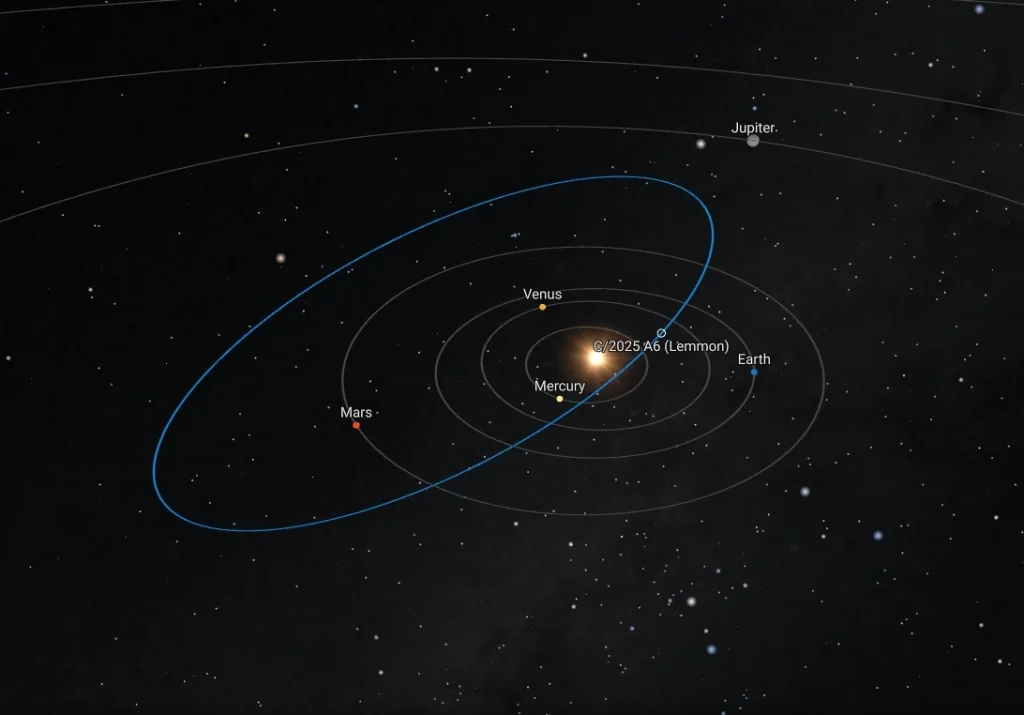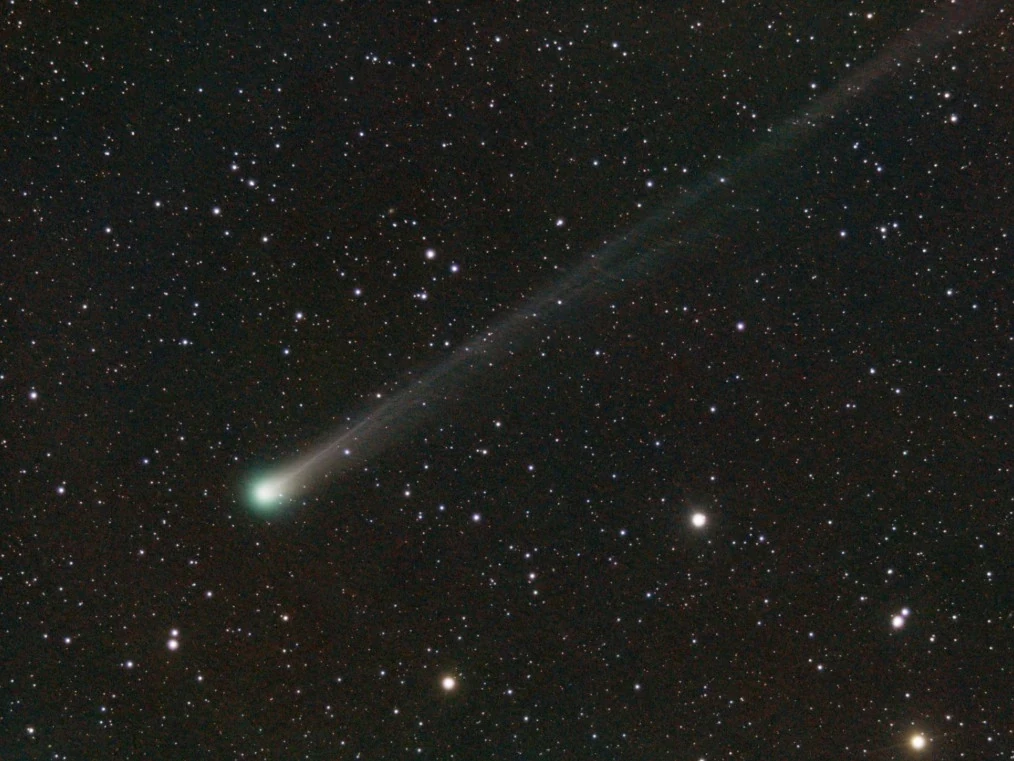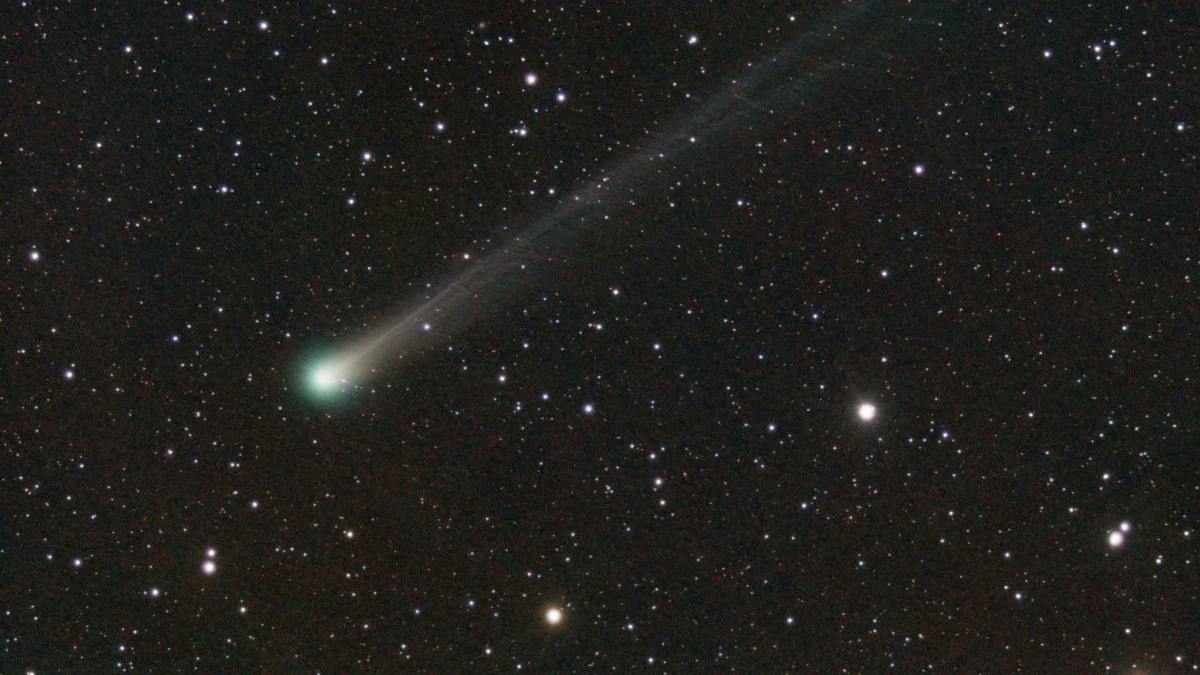Comet C/2025 A6 (Lemmon), a long-period object discovered on January 3, 2025, by the Mount Lemmon Survey in Arizona, USA, will pass 0.596 AU (89 million km / 55 million miles) from Earth on October 21, while located in the constellation Boötes. The comet will continue toward its perihelion on November 8, when it reaches 0.529 AU (79 million km) from the Sun.
The object follows a highly elongated retrograde orbit with an inclination of 143.6° and an eccentricity of 0.9958. Current orbital solutions indicate an inbound period of about 1 396 years, shortened to roughly 1 150 years after this passage due to planetary perturbations.
Photometric models from NASA’s Jet Propulsion Laboratory (JPL) predict a magnitude around 6.7 near perihelion, while the Comet Observation Database (COBS) reports brighter ground-based observations approaching magnitude 5.3.
This places the comet at the threshold of naked-eye visibility for observers under dark rural skies, and easily detectable with small telescopes or binoculars.
Throughout October, C/2025 A6 transitions from the morning to the evening sky, becoming more accessible for northern observers after sunset. Around the time of its closest approach, it will appear near the star Rho Boötis, gradually moving westward as it heads toward perihelion. Its apparent motion averages roughly 0.8° per day relative to background stars.
 C/2025 A6 (Lemmon) orbit diagram. Credit: ESA/NEOCC, The Watchers
C/2025 A6 (Lemmon) orbit diagram. Credit: ESA/NEOCC, The Watchers
Spectroscopic measurements show the comet’s characteristic green coma produced by diatomic carbon (C2) fluorescence and other carbon-bearing species under solar ultraviolet radiation. CCD imaging has detected a developing dust tail extending antisolar as sublimation accelerates with increasing solar proximity.
After perihelion on November 8, Lemmon will remain observable for several weeks, though its brightness will slowly decline as it recedes from both the Sun and Earth. Northern Hemisphere observers may continue tracking it through mid-November with small instruments during early evening hours.
The comet shares the October sky with C/2025 P1 (SWAN) and the Orionid meteor shower, offering multiple observational opportunities for both professional and amateur astronomers.
 C/2025 A6 (Lemmon) on October 2, 2025. Credit: Dimitrios Katevainis
C/2025 A6 (Lemmon) on October 2, 2025. Credit: Dimitrios Katevainis
The SETI Institute, NASA’s Minor Planet Center (MPC), and several observatories continue to monitor Lemmon’s brightness evolution, dust production, and volatile release as part of ongoing studies into long-period comet dynamics.
While C/2025 A6 poses no risk to Earth, its current apparition provides valuable insight into the chemistry and structural evolution of dynamically new comets entering the inner Solar System.
High-resolution spectroscopy and imaging during October–November 2025 are expected to refine the understanding of the comet’s nucleus activity and compositional properties.

